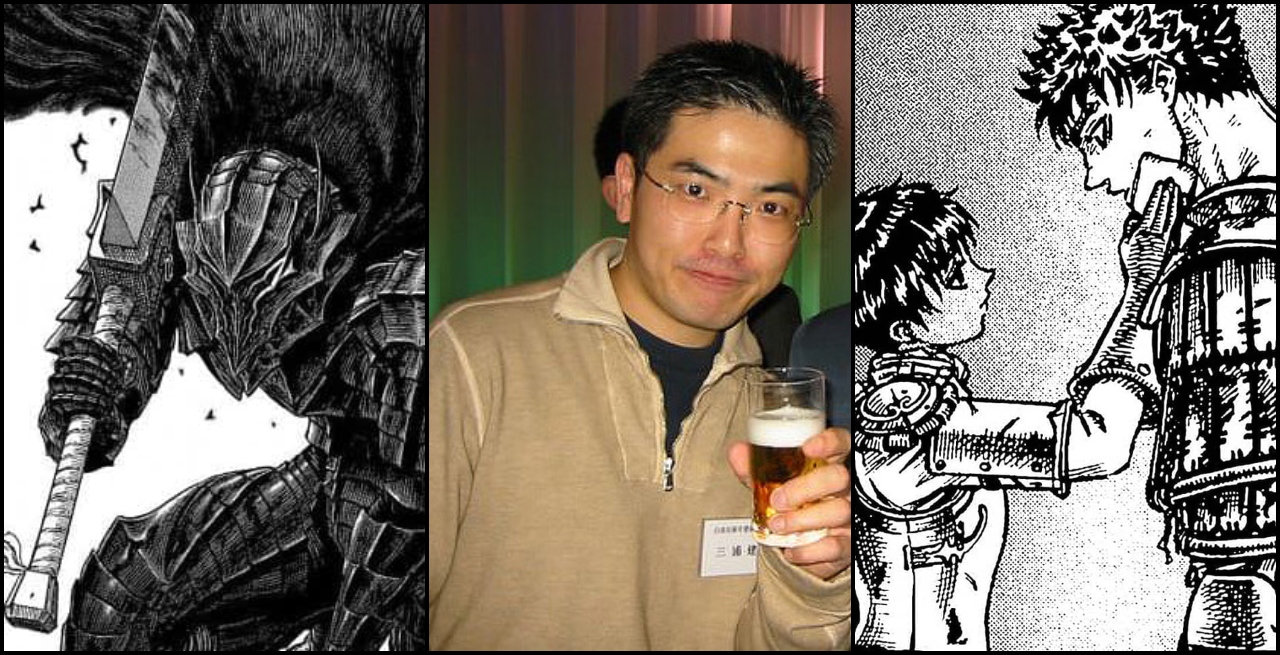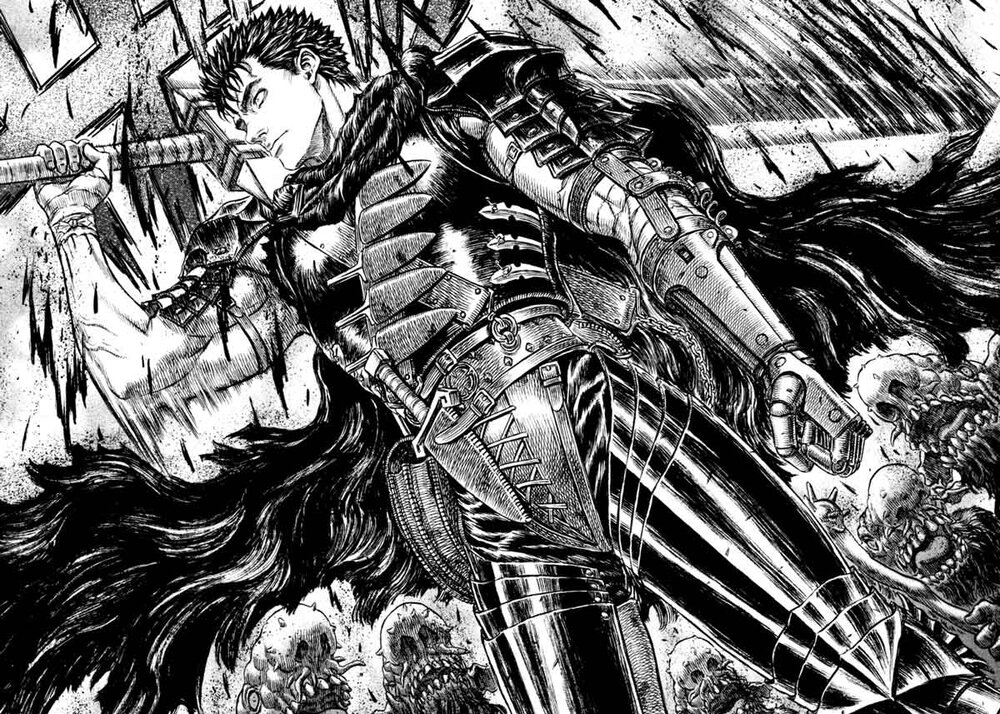
“You’re going to be all right. You just stumbled over a stone in the road. It means nothing. Your goal lies far beyond this. Doesn’t it? I’m sure you’ll overcome this. You’ll walk again… soon.”
On May 6th, 2021, we lost one of the greatest creative minds of our time. While the masses may not know the name Kentaro Miura, his epic manga Berserk, first published in 1989, sent influential shockwaves across the world, inspiring everything from other manga, to acclaimed video games, to Hollywood blockbusters. The image of a hulking warrior swinging a massive sword in battle against abominable demons that tower over him has become iconic, and is seen as an inspirational metaphor for overcoming seemingly insurmountable odds. This is Eden, and today we are paying tribute to one of the greatest mangaka ever to live, whose legacy will live on forever in art and media.

Kentaro always knew he wanted to be a storyteller, and with his astonishing talent as both an artist and writer, he was able to make that dream a reality in 1989, when Berserk was first published. The story follows the tragedy-laden life of Guts, orphaned from birth, adopted by a mercenary who abused him in many ways, and forced to go out on his own as a young teenager, knowing only the life of a warrior. He is eventually brought into a mercenary group called the Band of the Hawk, whose charismatic young leader, Griffith, would change Guts’ life, and the world itself, irrevocably. Eventually, Guts becomes an infamous vagabond known as the Black Swordsman, hell-bent on cutting down the monsters who caused the downfall of those closest to him.
As a lifelong fan of all things weird, spooky, and twisted, I thought nothing could shake me any longer. True crime, supernatural horror, demonology, paranormal phenomena — I’d seen it all. Then, I sat down and read Berserk. I was curious about its influence on the Dark Souls video game series, and I thought that my interest wouldn’t go much farther than basic research. By the end of the second chapter, I was hooked. The characters were nuanced, even the bestial villains were given humanity, and the story had so many maddening questions. I needed to know where it was going. What I’d thought was going to be just some flashy action comic with a macho protagonist turned out to be a heart-wrenching study of trauma, humanity, and perseverance. And, for me, it became like therapy. Because despite the hell that Guts continuously goes through, he just keeps swinging his sword. He keeps on going. This indomitable spirit earned him the title “the Struggler,” something I felt a kinship with.

Miura’s art is some of the most detailed I’ve ever seen. It’s no wonder he took long hiatuses between chapters. The artwork could be terrifying, beautiful, gruesome, surreal, and emotional, sometimes simultaneously. It truly is a wonder to behold. It could display the subtlest of expressions effectively, and the monster designs and nightmarish landscapes could make H. R. Giger gasp. The characters and world feel truly alive, and that is why, as we follow the adventure, we come to love them, and fear for their seemingly imminent demise.
Kentaro Miura left his masterpiece unfinished. We’ll probably never know how Guts’s quest ends. But, with a story this intricate and poignant, it really is the journey, not the destination, that matters. Whether or not Berserk ever gets a proper ending, Miura achieved his dream, and, as a result, countless other fires were lit in the hearts and minds of his readers. He will be sorely missed, and always respected and admired.
Eden is a Soong-type android learning to pass as human through studies of pop culture, humor, and dark fantasy. Perhaps one day she will learn to love and pronounce “hyoo-mahn” correctly. She was written analyses of music, video games, comics, and film. You can find her other writings on Vocal and WordPress.